Diverse fabrics for interior design. Latest collections of famous designers.
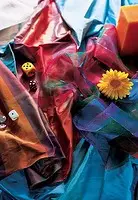
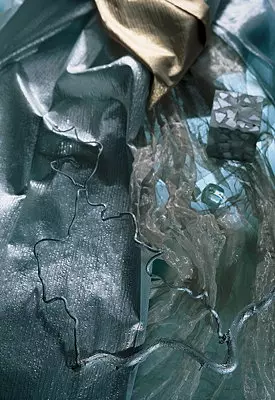
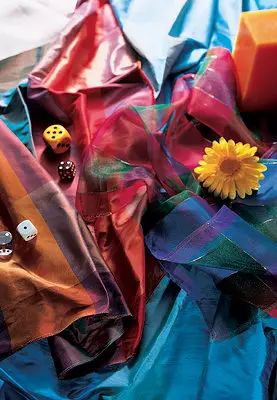
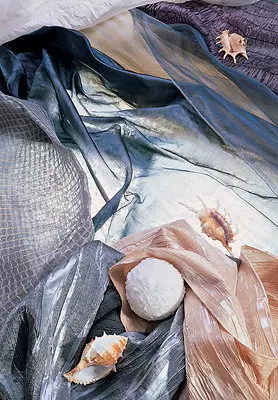
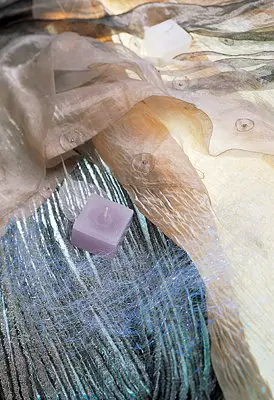
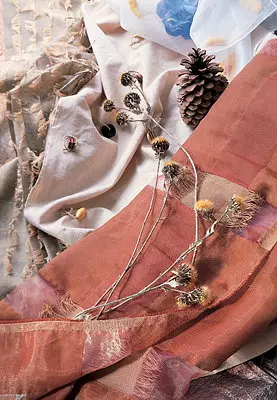
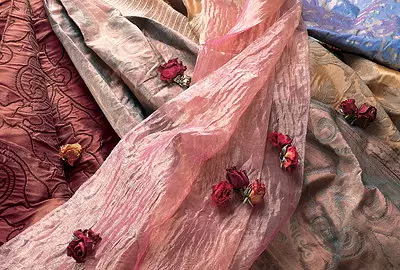
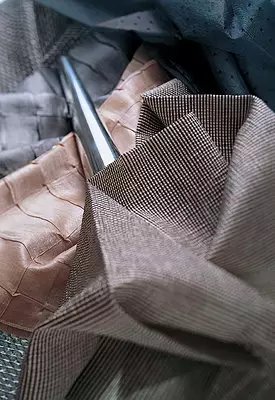
History
Rough fabrics from vegetable fibers - flax, hemp, nettle - appeared in the era of neolithic. In the middle of the 3th millennium BC e. The mummy of the Egyptian pharaohs were already wrapped in the finest linen canvas. According to the new version, Argonauts, having left for the golden rune to Kolkhid, were not looking for the skin of the ram, but the secret of receiving the gentle flax yarn.Another believed and priceless material for Europeans was silk. China managed to keep the secret of his receipt of more than two thousand years. Everyone who tried to take a silkworm from the country, waited for the death penalty. And yet approximately in 554, two monks managed to deliver his larvae in Byzantium. For this purpose, cunning crowns were used, served by the package for precious cargo.
Wool was valued low, because its "carriers" was found everywhere. In addition, the yarn from sheep wool was hard to paint in bright, clean colors and get an elegant fabric.
Another thing is originally white cotton. The first mention of it is associated with India and belong to the III millennium BC. e. However, and with cotton had to obey: not all of its varieties are suitable for weaving.
In Byzantium, when interior design, the fabric was used everywhere: the doorways were drained, the sofas and tables were rushed, the columns were turned around. Preference was given to silk, the body and gaze.
In medieval castles, the cold walls soften the tapestries, the floors were hidden by carpets, the plated ceilings stretched at the top. The fabric played not only a functional and aesthetic role, it became a kind of calendar: the drapery replaced each other in accordance with the religious festivals, the time of the year, the hunting seasons - all the fact that determined the rhythm of the life of the castle owner. Let's say, in the royal palace in Fontainebleau, the interior changed several times a day.
Geography
Today, fabrics can be made at all where raw materials are obtained for them. Take, for example, silk. His Tkut and in France, in Germany, and in England, and in Italy, not to mention Russia. The highest quality, smooth matter is obtained in France. Italian products are famous for the texture, brightness of paints and the fineness of the pattern. The German concern Jab Anstoetz Teppiche posted its enterprises in India and Indochite, which significantly reduced the cost of production. British Tkut and traditional silk, and - relying on the culture of numerous colonies - matter saturated with Asian flavor. And, let's say, Jim Thompson, a collector and fan of Thai silk, came up with his, unexpected turn in its production. The English industrialist did not build huge weaving factories and bring the random people there. Thompson distributed orders for the fabric of the required color and the drawing itself to Thai weaver, working in small family workshops, and as a result, a unique piece cuts of matter took. Thus, in the current centuries, only one innovation appeared in the technological chain - synthetic dyes.
If we are talking about Uzbekistan, everyone recalls characteristic rainbow outfits with patterns, the edges of which are slightly blurred. This is a silk fabric called Ikat. They traditionally sew robes, curtains and bedspreads. An unusual brilliance and Moir-Moarley Matter received after the "cruel" technical surgery: woven the canvas chopped off heavy hammers, flattening and without that thin thread.
Now Asian, African, Mexican, Egyptian, Chinese and most exploited Japanese ethnic motives are borrowed by European designers. More often than others are used in the hieroglyphs, sometimes one sign occupies the entire space of the curtains. This is a knowingly "environmental" direction of design, including the composition of the materials used. One of the collections of this kind created the French firm Nobilis. It offers a panel of rice paper, either by silk threads, or penetrated by black abacus stems. The composition "Yin and Yang", the price is $ 270 (hereinafter referred to as the cost of 1 p. M. - Ed.). In another case, the bamboo pieces are woven in the panels of wild silk. All this brings a restrained, but unforgettable natural note in the interior of the city house.
It is good or bad, but today I freed our imagination from the national, temporary and style framework. We got the opportunity to create everything in the interior, which tells the taste and imagination.
Figure and painting
Fracture Epoch pushes designers in search of perfection in the past. Fabrics included fabrics in an antique style, drawings, scalked from the ornaments of ancient civilizations. The tapestries are returned again, sometimes in the form of imitation, such as, for example, fabric from the American collection of ASHBOURNE. This matter exactly reproduces the pattern of vintage tapestries, but woven from light synthetic fiber, gentle to the touch and even slightly passes the light, due to which it becomes multifunctional. There is such a material about $ 60.Very varied selection of fabrics with a pattern. First of all, I want to note matter with large flowers, fruits and vegetables, reminiscent of still lifes. Images are either schematic, conditional, as if sketched with rude, chaotic strokes, or by the degree of reliability approaching photographs. Photorealistic fabrics are made in the technique of transfer printing. It was she who was named the nail of the 2001 season in the decoration of the tissue at the Decosit-2000 exhibition, held in Brussels.
The preference of natural motives (phytophilia) is quite natural for humans. Wednesday is rich in vegetation since ancient times associated with people with peace, silence, life at all. It is not surprising that, being in the world of asphalt and concrete, we are trying to at least simulate the gracious corner of nature. Colors for such collections are selected open, saturated: coral, red, lilac, green, orange. To a certain extent, they fill the need of an urban resident in positive emotions, bright colors.
Another actual topic in the decor fabric-marine. Images of fish, shells, algae is a manifestation of the eternal traction of a person to travel, romance, life on uninhabited islands. The color palette is built on all shades of blue, lemon, turquoise.
Art historians and critics have recently stubbornly buried minimalism and paints and materials related to it. However, this style will always have persistent adherents, in the interiors of which will be reigned with glass and metal. Naturally, this tendency manifested itself in white, gray and silver textiles. A variety of transparent and translucent fabrics are proposed, as well as fabrics with transparent inserts. For example, Saban and Nubia from Siag company priced at $ 100. Curtains made of them with lavsan inserts, similar to mica windows, fill the room with cheerful solar bunnies. Silver, golden, copper colors are very expressive. So, the silver fabric from the Nick Schleudern costs $ 65, and similar to the aged gold from Jab Anstoetz Teppiche - $ 150.
Decorative matter with an abstract pattern is always equally relevant, the time brings only small adjustments to their stylistics. Today, in fashion, thin expressive lines and strokes, as if spent by pen or brush.
A special topic is a tranillable cloth fabric (form they may have arbitrary). Looking at the cotton surface - a monophonic or with a pattern, and you can not guess that the finest translucent base is hidden under it. Such products are among the cheap Spanish fabrics, and in eminent European designers, so prices range from $ 30 to $ 300.
Dense silk mothers woven from multi-colored threads of the base and duck confirm their name "chameleon": the canvas are removed that gold and purple is red and green. As a result, a living, ever-changing interior. Many famous firms are Dedar, Siag, Ashbourne - produce these exceptionally elegant fabrics. Depending on raw materials and density, their price ranges from $ 40 to $ 250.
Aesthetics
Fashion on the Stampsum Curtain is one of the components of the fashion on the interior design as a whole. Today, decorators allocate several main directions in this area: a classic, consonant style of different cultural eras; minimalism and high-tech, similar to their high requirements for the quality of the smallest details; Eclectic, combining distinct elements.
Recently, more and more English-style adherents appear. Another existing style that the consumer can often protrude is the so-called hotel. With the discovery of our country's borders, the fellow citizens brought the dream of a better life, packed in the images of the interiors of hotel numbers - sterile, faceless, but in the design of which there are certain elegance and comfort. In fact, not one we, savages, like the hotel spirit. This style is applied in the design of interiors around the world - the truth in the version of the exquisite "old guesthouse".
As for the materials, by the beginning of the third millennium, they became so multifaceted that even empty space can be filled with meaning and content. They are beautiful, mysterious, they sound - they rustle, rustle and hurt. Finally, they will shine, such as unusual fabric from the lawmaker of the textile fashion Baumann. It is a veil with fluorescent figures of butterflies and beetles on flexible plastic ribbons. When you quit the light, it seems that fireflies fly in the twilight. There is such a "magic" matter from $ 100.
Fabrics embroidered with beads, glass, sparkles, can be attributed to any stylistic direction. They have romanticism of colonial aesthetics, the aroma of ancient ears and the omnivorescence of the present time, when a person wants to get everything at once: the game of light and shadows, rainbow glare, raindrops, shine of jewels and Christmas tree Mishur. These are fabrics from Christian Fischbacher, Sahco Hesslein, Jab Anstoetz Teppiche, price - from $ 150 to $ 250.
Fashion for multi-layered clothes affected by the design of the curtains. Two canvas on the windows-transparent (tulle, veil, gas) and deaf (taffeta, curtain fabric) - always adopted, such a set dictated by practicality. Today, designers seek to emphasize expressiveness, the depth of the window. Therefore, often thin translucent matter is hanging on top of dense. In this version, decorative parts (beads, luberers, rubber splashes in the cloth) look even more effectively. The layers can be different in color, but the same by invoice (for example, from organza). The curtains stitched from two cloth transparent veils of additional colors - yellowish and blue, copper and green, purple and orange, change their shades with different lighting, air movement, and just when looking from different points of the room. Such fabrics are in the Nya Nordiska factory collections, Christian Fischbacher, Interior, Jab Anstoetz Teppiche, Sahco Hesslein. Their price is from $ 100 to $ 200. A two-layer organza from a polyester from Jab Anstoetz Teppiche is worth $ 160, and the same organza, but imbued with rude threads (Baumann's collection), - $ 190.
For a similar multi-layer composition on the windows, the fabrics "Companions", complementing each other in color, texture and pattern. Such combinations offer almost every manufacturer. Rasch, for example, a drawing in the form of contrasting human figures is applied to light matter and isted on the harmonious with it transparent.
Interesting transparent, but practical fabrics for $ 100 from the Baumann collection. They are equipped with pockets that each fill in their taste, thus creating its own designer composition.
Very graphic corrugated fabrics with improper soft or, on the contrary, fixed rigid folds. Such products are offered by Factories Siag and Sahco Hesslein. Years of the organza of the German company NIA NORDISKA are approximately $ 115, and the dense corrugated Matter of German and Swiss production - $ 105-135.
As a rule, in the collection of each factory there are fabrics and avant-garde directions, and quite traditional, and the boundaries between different styles are increasingly complicated. But recently, lovers of retro have the opportunity to recreate the interiors of the past epochs with complete reliability. Now, in addition to antique furniture, accurate copies of silk interior fabrics with patterns of the XVII-XIX centuries are available. They are produced under the brand name "Faberge" by Art Decor. It is up to $ 200. Designers can even achieve the effect of matter of matter, which gives special plausibility to the interiors performed in historical style (classicism, baroque, rococo).
But let's turn to another extreme. As opposed to verified, saturated items of historical interiors there are completely different, leaving the feeling of incompleteness, spontaneity. Especially for them, manufacturers have released fabrics with the effect of reference, rubbing, with irregular corrugated folds. Another relevant direction that supports protest against demonstrative luxury is the fabric "on production topics". These products resemble the color polyethylene, then aluminum foil, into which the pipes for thermal insulation are wrapped. Grids are similar to the container of fruit and vegetable bases. There are networks, entirely woven from a metal thread. There are also fabrics like two drops of water similar to the lining material of Flizelin. No less original matteria in the form of an air cage, one-photon or patterned. Despite the fact that the cloth is formed from confused by weightless threads, it can be erased and stroke. Releases this spectacular Fabric SIAG Swiss company, cost - approximately $ 40.
A continuation of the topic of a kind of textile "Punk" can be considered matter with pop-bays, confined frnitty flaps, "fought" holes.
Biology
Initially, natural substances were used for tissue staining. Moreover, some dyes were valued by weight of gold, because it was made of rare exotic plants, and, for example, the Royal Purpur - from special clams. To get a kilogram of matter of luxurious purple color, it was necessary to catch and turn two thousand mollusks into a malicious broth. The price of their death was precious, not burning in the sun paint used only for the outfits of kings and clergy. In the future, the trendies became colors, dyes for which just appeared and were the most rare. Then they are cheaper, made the property of the majority, and snobs had to look for a new wicker, signing about chosen. In a later period of history, multicolored fabrics, previously inaccessible by common, fell. And then the rich aristocracy moved to black and gray clothes.In 1992, the world was revealed unusual cotton - not white, but painted in different shades of brown, olive, green and red. The most amazing thing is that it was a natural color of cotton fibers. Naturally painted cotton is remarkable not only with its shades. This is an environmentally friendly material with bactericidal properties, since it includes chemical compounds that suppress the growth of bacteria. Valuable qualities are not destroyed by boiling and harmless to humans.
If in order for natural cotton with new properties to appear, the efforts of a person, the unusual silk - the merit of the Thai silkworm. He is originally so much as the cocoon is golden, and not white, like a Chinese or Japanese rhodium, and a thread of heterogeneous in thickness and brilliance. Inside it is thin, shiny, and closer to the surface of the cocoon becomes rude and matte. Woven from the same type of threads, thin or rigid, canvas opens or gentle, or rough. And if you use a thread along the entire length, then the result will be a very decorative fabric with tuberculos of thickened thread, the so-called wild silk.
Chemistry
Note on the natural composition of the fabric is not a guarantee of its environmental purity. Harmful substances can get into the fibers of the plants in the fields or in the process of dyeing. In addition, often a person has inconveniences precisely from contact with natural materials (allergic to wool, smell, pollen, microorganisms, etc.).
Special impregnations are able to make the fabric of a dust-repellent, water-repellent, uninfused, not transmitting ultraviolet, non-peculiar and even non-combustible. It is such matter that should be chosen for textile interior design, since any other will quickly lose its commodity look. In all other fabrics for clothes and for home are equal. If you follow the fashion on the podiums, then you know which matter is fashionable and in the design of interiors.
The recipe for modern fabrics is as complicated and unavailable to competitors, as in the old days. Moreover, the creation of the latest matters using computer technologies is in parallel with a no less exciting process - the manufacture of traditional tissues on ancient recipes. And today, as in the XVI-XVII centuries, the famous Lyon silk, woven manually, is soaked in the river to give it softness and elasticity. And the Fabric of the XXI century Swiss company SAHCO Hesslein by 20% consists of silk and 80% of metal threads. With it, it is possible to work as with clay: to mive, twist in the harnesses, climb the folds. The richest plastic and aesthetic capabilities of the metallized fabric justify its price - $ 180.
Some matter have additional tactile stimuli - rubber inserts. When you touch such a surface, you immediately feel the contrast between cool, dry matter and warm, soft splashes. This new spectacular technology is demonstrated by Siag, Interior. However, such fabrics, of course, are silent - about $ 135.
Physics
Let's talk about the latest technologies used in the manufacture of fabrics. If earlier sunlight penetrated our houses through the lace of Tulle, now through the holes cutting the laser beam in silk, fetre, organze. The meaning of the modern approach to the design of the windows is not to stop completely the flow of natural light, but only to simulate. He is left by loopholes in the form of solubular holes. At the same time, the main functions of the curtains are protection against prying views, the creation of visual insulation is completely performed. And they are added to the artistic meaning, so that the window turns into an independent element of the interior. Fabrics with holes are presented in the collections of almost all manufacturers, cost - from $ 80 to $ 180. Sometimes such matter look like bas-reliefs, recreating the game of light and shadows on the stone elbows of the walls of Gothic cathedrals. These are a cloth of dark gray or almost white with a metal glitter. The slots have the shape of triangles, rhombuses, served bands. The Swedish firm Kinnasand offers not so dark panels - due to the light background and rounded "windows". Matter with untreated edges cost $ 78, with treated - $ 115.If the room is dark, sparkling and overflowing tissues from organza and gas from Dedar will fill the lack of sunlight from the organza and gas of different shades from Dedar. They dissipate and soften the light, and they themselves look like a shining cloud.
The fabric in the bedroom interior is a completely special topic. It is convenient to have transparent curtains and deaf curtains here. Curtains can be seasonal: create a feeling of coolness and freshness in the summer - and "warming up" in the winter. How to achieve such an effect? For example, colors. It is known that the use of flowers associated with most people with cold, can reduce the subjective feeling of temperature in a room for 2-3 degrees. C. Another option is to play with the texture of the fabric: a brilliant atlas and air tulle will fit for the summer, and for winter - dense matterium. However, the latest designers develop us and from these familiar landmarks. For example, the last collection of Nobilis, combining, seemingly incompatible: transparent organza and mohair, was already obtained by the Moscow Salon "LEGE ALTO".
Economy
If there is a storm, and supplementing their accessories are quite complex, and still manufactured using manual labor, the price of the window of the four-room apartment becomes comparable with the purchase of an inexpensive car. Sometimes the inexperienced buyer has a question: why are decorative fabrics of famous firms so expensive? This is also explained, firstly, the first-class quality of the material and, secondly, the originality of the design. Such fabrics are sold only in salons, which are official representatives of textile factories. Moreover, prices are unchanged in such salons, and there is confidence that you will receive quality products.
Not knowing this, you can get caught on the bait of manufacturers of fakes. Some Turkish, Spanish, South Korean and Russian factories copied fashionable new factories with world name. There are two "imitation" of two times cheaper than the original, and the uninitiated buyers are sometimes cheaper. However, miracles do not happen: textile pirates are saved on the quality and amount of raw materials, on dye and weaving technology. For the consumer, the purchase will turn the rapid loss of the curtains of external attractiveness, which means that the money spent.
Technology
Of course, almost every hostess, reading numerous manuals in books and magazines, can herself sew a chart on his own sketch. But all that is mentioned above about the properties of the fabric, its complex "character", convinces the need to contact the specialists.
For them, the creation of a harmonious interior is a profession. A whole team will work on your order: designer, crate, seamstress. They will be able without significant changes in the setting (and therefore without additional material costs) to transform your home, find his style. The scene will remain a complex technological chain, requiring professional equipment and special knowledge and skills. For example, in the Salon "Curtains on Lomonosov" we were explained that for a high-class company, the treatment of fabrics over the ferry, stroking all seams, an individual project - the norm. And any simplification of this process consistently leads to the rapid loss of a finished product of quality. So to the selection of the cabin, as well as the choice of fabric, it is necessary to approach very carefully.
Many large salons, in addition to the tissues and their combinations, offer entire interior compositions. There are also lamps, furniture, and details such as vases, candles, etc. The exhibition halls with constantly updated exposure are available in the salons "Lighten Alto", VK interior, "elite" and some others.
When choosing a fashionable fabric from leading designers, it is necessary to prepare for the fact that from the moment of ordering before it is received by about 2-3 weeks. The term of manufacture of a curtain directly depends on the complexity of the selected model, but no one is interested in tightening the deadlines.
Due to the appearance of spectacular, expressive matter, textiles in the interior becomes increasingly becoming a non-minor element, but the dominant attracting admiring attention. It happens that the fabric is so good in itself, which does not require complex compositions and additional drapery tricks. The only thing is necessary to create a complete image is a variety of fasteners: eaves, clips, pickups, fittings in the form of brushes, cords, champs. But this is a completely different story ...
The editors thanks for consultations and kindness in the preparation of the article "Lighter Alto" "Paradise-design", "Curtains on Lomonosovsky".
Fabrics for textile compositions are provided by the salon "Lege Alto"
